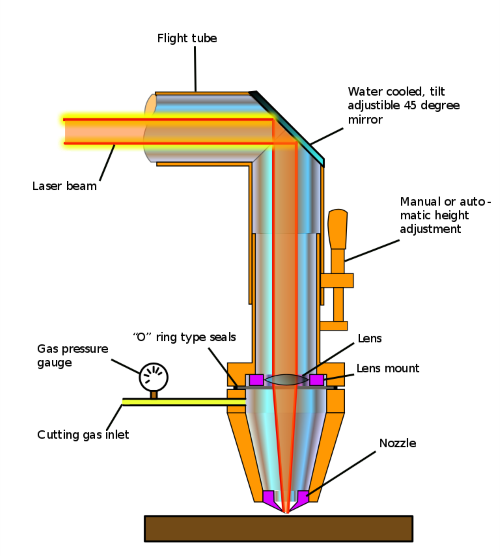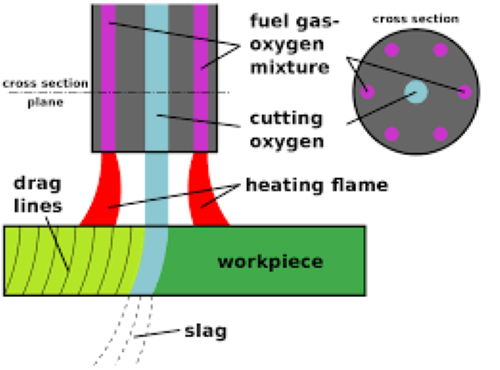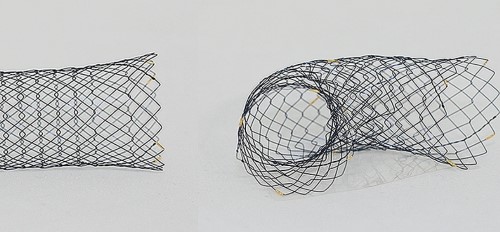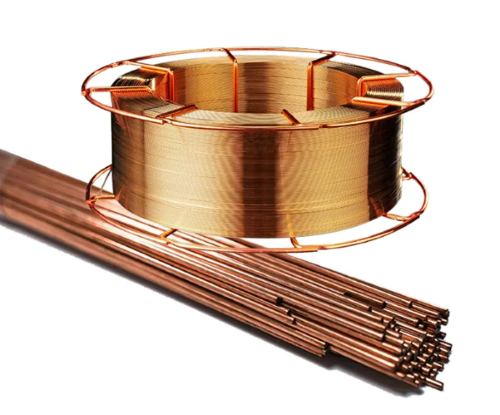Top 5 Methods for Effective Metal Cutting
Introduction
Cutting metal effectively requires the right method to ensure precision, speed, and quality. Each method has its own set of advantages and is suited for specific applications. This article discusses the top five methods for effective metal cutting, detailing their unique benefits and common uses.

1. Laser Cutting
Laser cutting is a highly precise method that uses a focused laser beam to melt, burn, or vaporize metal. This technique is renowned for its ability to achieve tight tolerances and intricate details, making it ideal for applications requiring high precision.
 [1]
[1]
--Advantages:
Laser cutting offers unparalleled precision, enabling the creation of complex shapes and fine details. The process is also incredibly fast, especially when working with thin materials, which significantly enhances productivity. The quality of the cut edges is exceptional, often eliminating the need for secondary finishing. Additionally, laser cutting is versatile and can handle a wide range of metals, including steel, aluminum, and titanium.
--Applications:
Laser cutting is widely used in industrial manufacturing for creating precise parts and components. It is also prevalent in the automotive industry for cutting metal parts and in the aerospace sector for crafting intricate components. Custom metal fabrication shops often utilize laser cutting to produce bespoke designs and products.
Related reading: Types Of High Temperature Refractory Metal Materials In Laser Forming
2. Waterjet Cutting
Waterjet cutting employs a high-pressure stream of water, sometimes mixed with an abrasive substance, to cut through metal. This method is particularly valued for its ability to cut without generating heat, preserving the material's structural integrity.
 [2]
[2]
--Advantages:
One of the primary advantages of waterjet cutting is that it creates no heat-affected zone (HAZ), ensuring that the material's properties remain unchanged. This method is versatile, capable of cutting a wide variety of materials, including metals, composites, and ceramics. Waterjet cutting is also highly effective for cutting thick materials that other methods might struggle with. Additionally, it is environmentally friendly, producing no hazardous fumes or waste.
--Applications:
Waterjet cutting is commonly used in the aerospace industry for precision cutting of parts and components. It is also utilized in the automotive sector and for creating metal art and sculptures. Custom fabrication shops frequently use waterjet cutting for a wide range of projects due to its versatility and precision.
3. Plasma Cutting
Plasma cutting uses an accelerated jet of hot plasma to cut through electrically conductive materials. This method is known for its speed and efficiency, especially when cutting thin and medium-thickness metals.
 [3]
[3]
--Advantages:
Plasma cutting is significantly faster than oxy-fuel cutting, making it a preferred choice for quick turnaround times. It provides clean cuts with minimal slag, reducing the need for extensive post-processing. The equipment is often portable, making it suitable for on-site work. Plasma cutting can also handle thick materials efficiently, offering versatility for various applications.
--Applications:
This method is widely used in construction and demolition projects due to its speed and portability. It is also prevalent in industrial fabrication, automotive repair and restoration, and shipbuilding. Plasma cutting's ability to quickly and cleanly cut through metal makes it a valuable tool in these industries.
Related reading: Electrode Materials for Plasma Cutting Machines
4. Oxy-Fuel Cutting
Oxy-fuel cutting, also known as flame cutting, uses a combination of oxygen and fuel gases to cut through metal by oxidizing and melting it. This traditional method remains popular for certain applications due to its cost-effectiveness and simplicity.
 [4]
[4]
--Advantages:
Oxy-fuel cutting is relatively inexpensive, both in terms of equipment and operational costs. It is highly effective for cutting thick steel plates, which other methods might struggle with. The equipment is straightforward to use with minimal training and is also portable, making it versatile for various cutting tasks.
--Applications:
Oxy-fuel cutting is commonly used in heavy industries, such as shipbuilding and construction, where it is necessary to cut through thick metal plates. It is also used in metal recycling and salvage operations due to its ability to quickly dismantle large structures.
5. Mechanical Cutting (Sawing, Shearing, and Milling)
Mechanical cutting encompasses various techniques such as sawing, shearing, and milling to cut metal through physical force. These methods are valued for their precision and control.
--Advantages:
Mechanical cutting methods offer high accuracy and repeatability, making them suitable for detailed cuts. They can handle a wide range of materials and thicknesses, providing versatility for different projects. Mechanical cutting often produces a good surface finish with minimal need for additional processing. The ability to control the cutting process precisely is beneficial for creating complex shapes and components.
--Applications:
Mechanical cutting is widely used in metalworking shops for producing custom parts and prototypes. It is also employed in manufacturing for creating detailed components and in custom metal fabrication. These methods are ideal for applications requiring precise cuts and smooth finishes.
Conclusion
Each metal cutting method has specific advantages that make it suitable for different applications and materials (See Table 1). Laser cutting offers precision and speed for intricate designs, while waterjet cutting provides versatility without thermal damage. Plasma cutting is favored for its speed and ability to cut thick materials, and oxy-fuel cutting remains a cost-effective option for heavy-duty tasks. Mechanical cutting techniques like sawing, shearing, and milling provide precision and versatility for various metalworking projects.
Choosing the right method depends on the material type, thickness, required precision, and specific application needs. For more information, please check Stanford Advanced Materials (SAM).
Table 1 Top 5 Methods for Effective Metal Cutting
Methods | Advantages | Applications |
Laser Cutting | - Unparalleled precision -Fast processing, especially for thin materials -Exceptional edge quality -Versatile for various metals | - Industrial manufacturing -Automotive industry -Aerospace sector -Custom metal fabrication |
Waterjet Cutting | -No heat-affected zone (HAZ) -Versatile for various materials -Effective for thick materials -Environmentally friendly | -Aerospace industry -Automotive sector -Metal art and sculptures -Custom fabrication shops |
Plasma Cutting | - Fast processing -Clean cuts with minimal slag -Portable equipment -Handles thick materials efficiently | -Construction and demolition -Industrial fabrication -Automotive repair and restoration -Shipbuilding |
Oxy-Fuel Cutting | -Inexpensive equipment and operational costs -Effective for thick steel plates -Straightforward to use -Portable | -Heavy industries (e.g., shipbuilding, construction) -Metal recycling and salvage operations |
Mechanical Cutting | - High accuracy and repeatability -Versatile for different materials and thicknesses - Good surface finish - Precise control | -Metalworking shops -Manufacturing - Custom metal fabrication |
Reference:
[1] Lasercutter. (2024, May 27). In Wikipedia. https://commons.wikimedia.org/wiki/File:LaserCutter.svg
[2] The Open University(2018, March 6). Water jet cutting (Hydrodynamic cutting). The Open University. Retrieved May 27, 2024, from https://www.open.edu/openlearn/science-maths-technology/engineering-technology/manupedia/water-jet-cutting-hydrodynamic-cutting
[3] Patel, P., & Rana, J.A. (2015). Parametric Analysis of EN8 (AISI 1040) Alloy steel on Plasma Arc Cutting. International Journal of Science and Engineering Applications, 4, 90-96.
[4] Oxy-fuel welding and cutting. (2024, May 20). In Wikipedia. https://en.wikipedia.org/wiki/Oxy-fuel_welding_and_cutting



